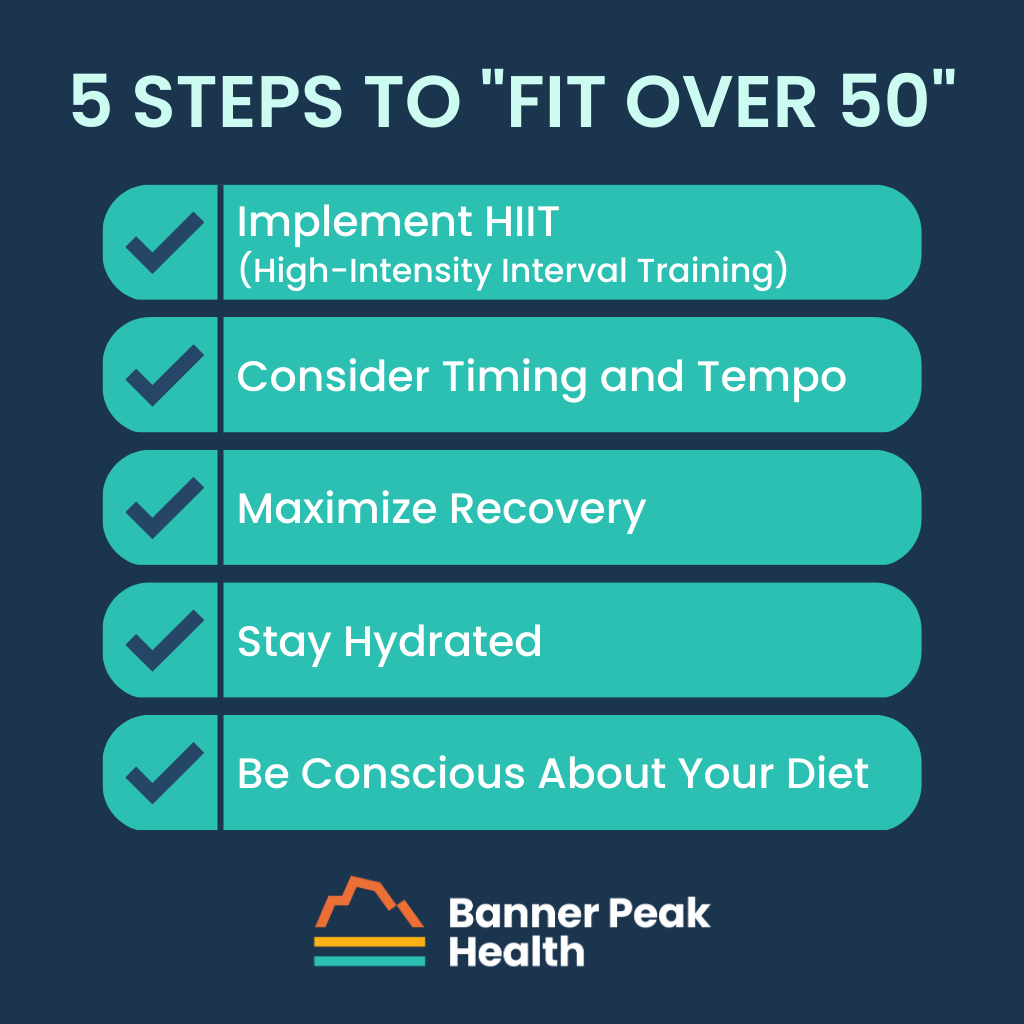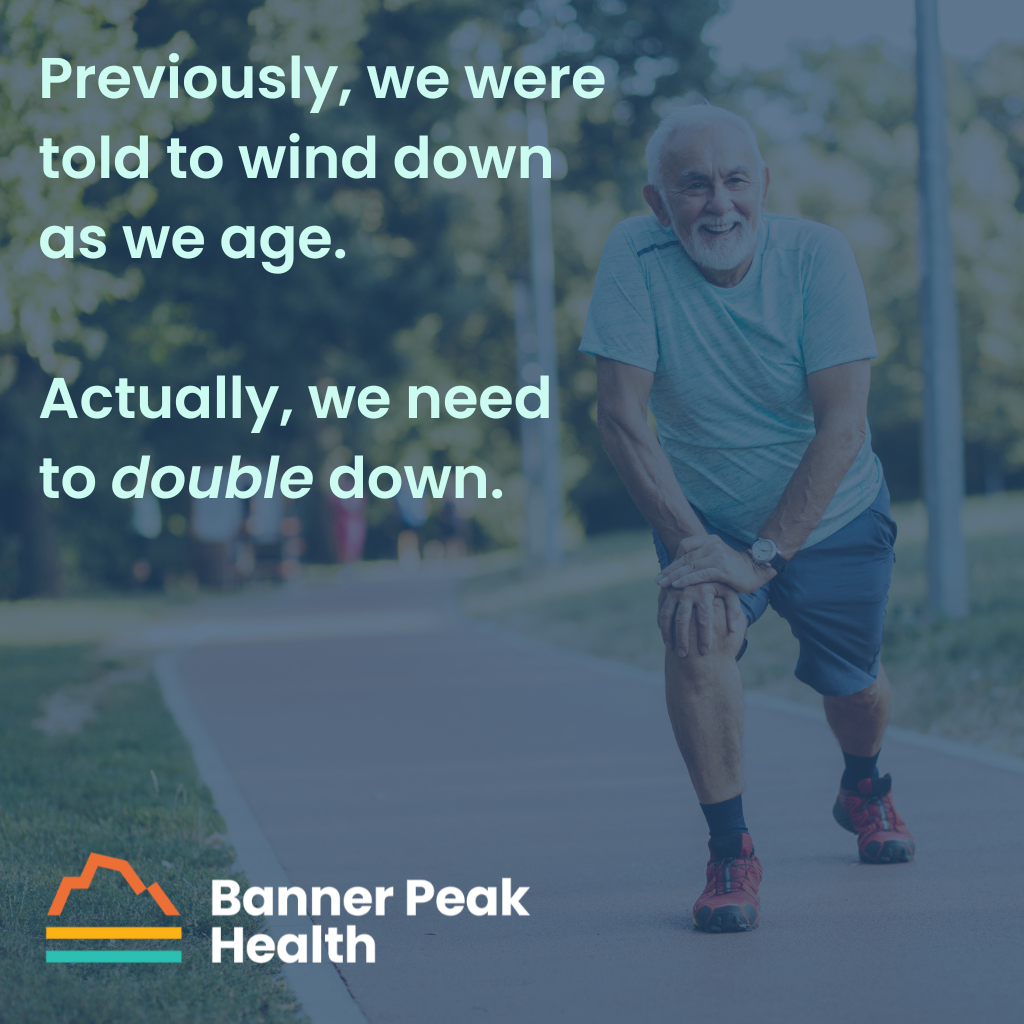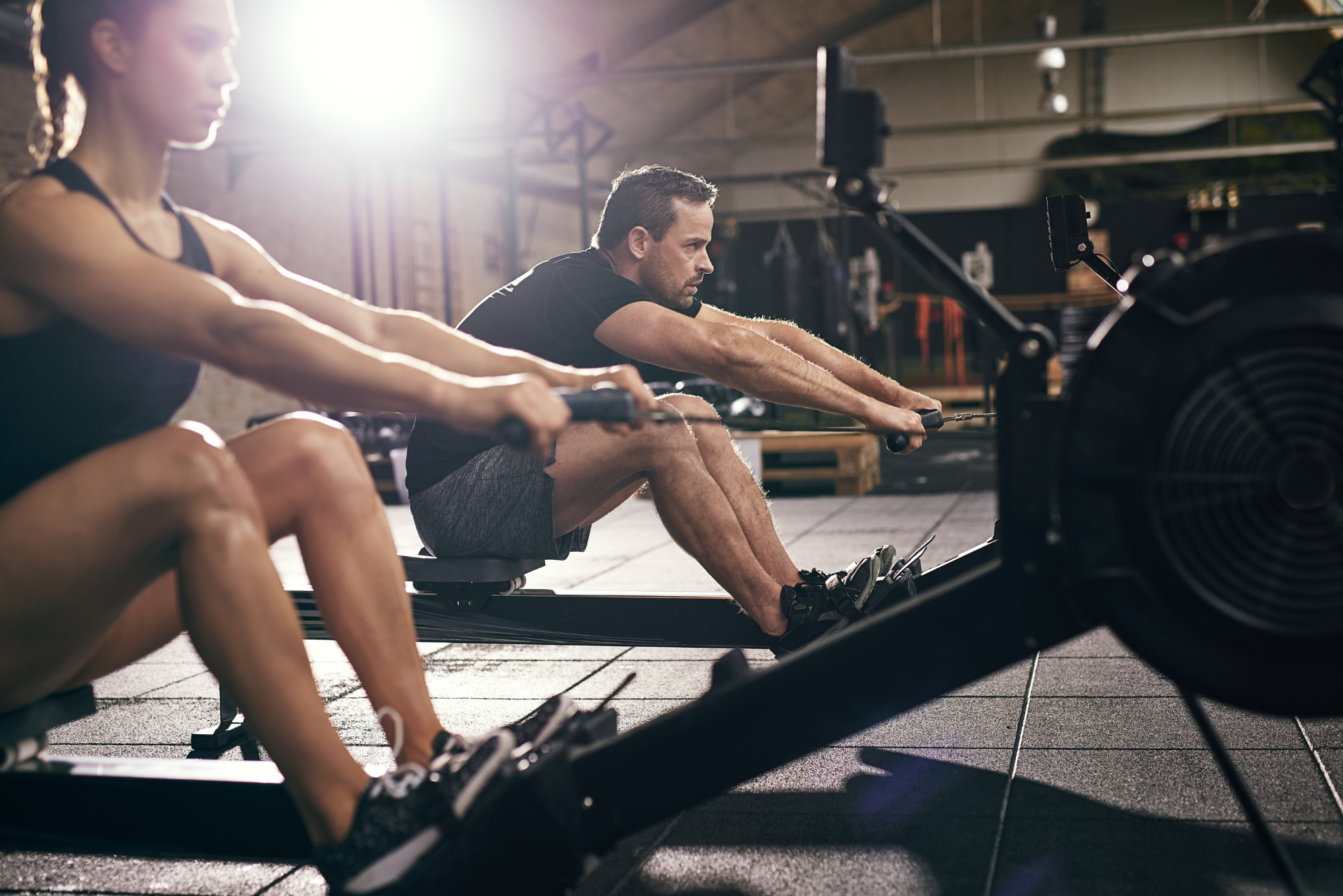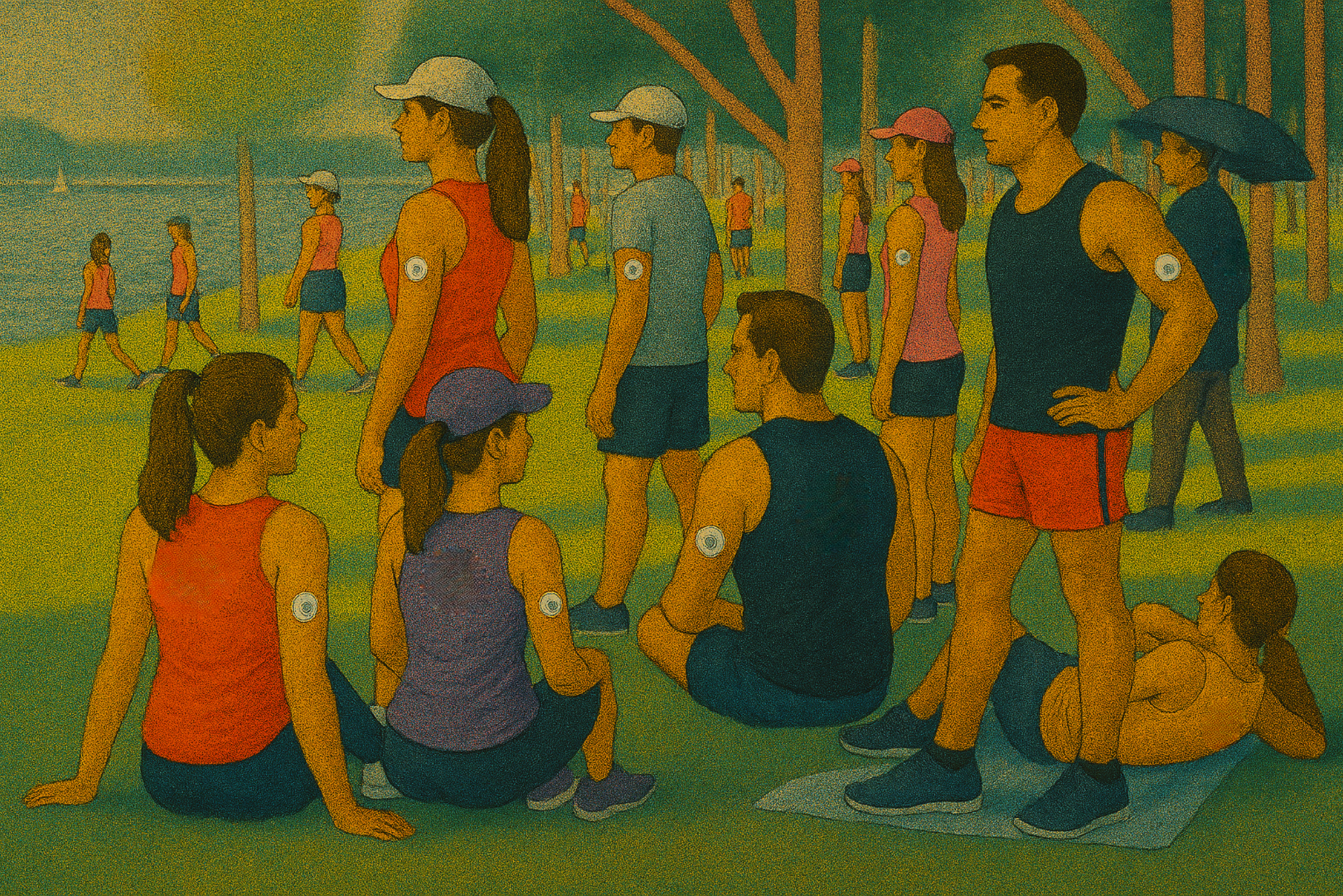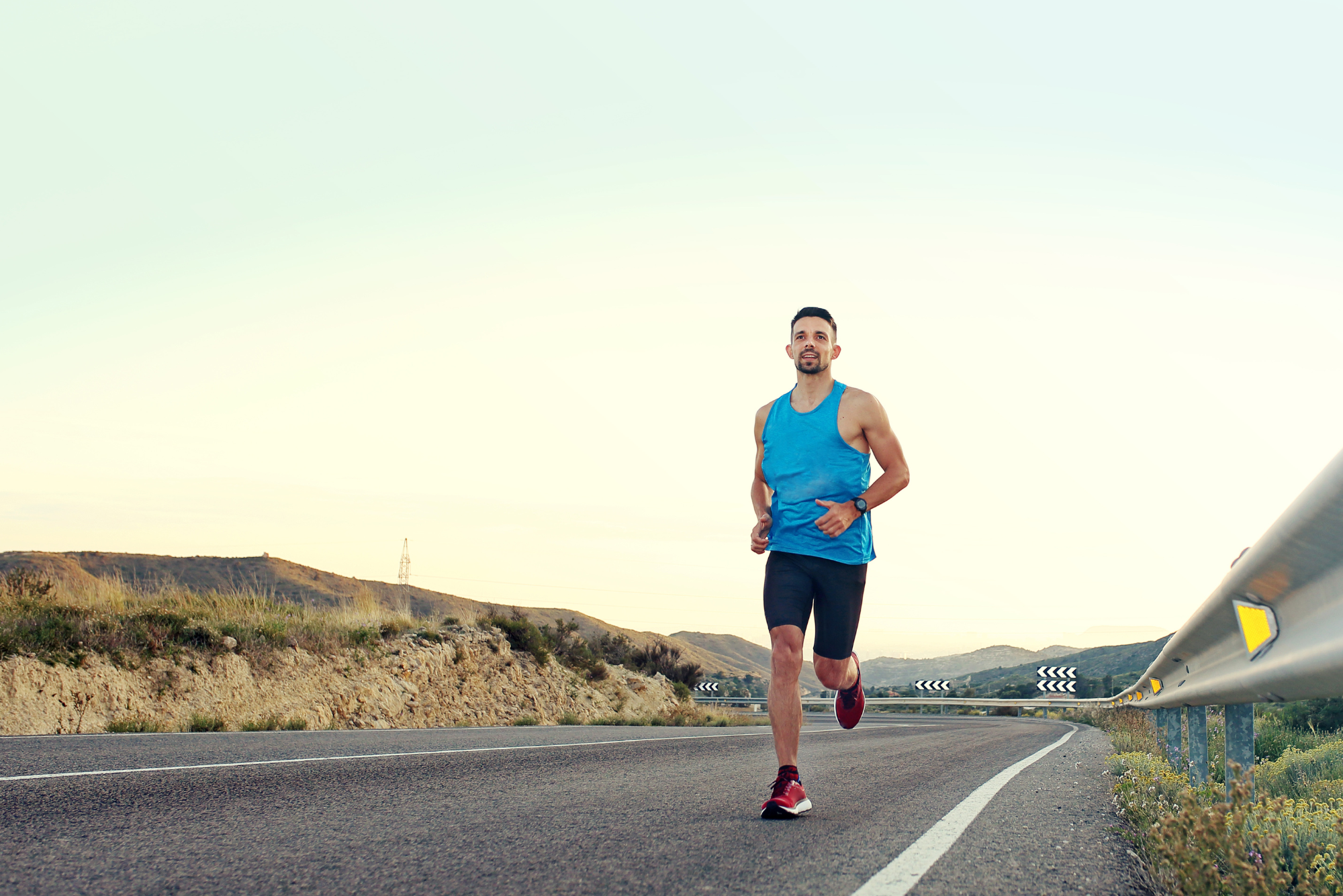Most people believe it’s all downhill after 70, 60, or even 50. Our days of athleticism are over, and we should throw in the towel.
I’m here to tell you that’s not the case. Those three or more decades could be filled with personal bests and new challenges.
Our bodies are vehicles — they’re our modes of transportation to our goals. Yes, our bodies change over time, but just because aging is inevitable doesn’t mean we have to abandon our aspirations.
Goals are vital. You can’t get to where you want to go unless you know where you want to go. As we age, the route and the vehicle we use to achieve our goals may change, but the goals themselves shouldn’t.
For example, many people look to athletics for a personal challenge. Let’s say you’re a runner. You may train for a marathon in your 20s or 30s, and you may train for a 10k or 5k in your 60s and 70s. The goal of a personal challenge is still there to be achieved, but you’ve changed the means.
Others look to athletics to socialize. If your goal is to find community through athleticism, you might play five-on-five basketball in college, then tennis or pickleball later in life.
Others, myself included, use athletic endeavors to get outside. For me, nature and athleticism are inextricably linked. I love bicycle riding after work — I do it to relax, stay fit, and connect with nature.
In summary, pursuing athletic performance and getting into shape after 50 is absolutely possible. Don’t abandon your goals just yet.

The Challenges and Implications of Aging
Getting into shape after 50 isn’t the same as getting into shape at 25.
As we age, so do our bodies. Our VO₂ max (the maximum amount of oxygen our bodies can utilize during exercise — our horsepower, in other words) declines, and our post-workout recovery time increases. Preserving muscle mass becomes more challenging, and overall body fat increases.
These challenges are part of aging. The good news is modern physiology and training tactics have given us hacks we can use to compensate for the inevitable.
In the past, we thought aging athletes needed to slow down, to scale back on their performance. However, modern research shows the exact opposite. Us aging athletes need to lean in and, in important ways, be more deliberate about our training.
Previously, we were told to wind down as we age. Actually, we need to double down.
Doubling Down: 5 Vital Steps
Implement HIIT (High-Intensity Interval Training)
One of the most important tools for preserving cardiovascular conditioning and getting into shape after 50 is high-intensity interval training, or HIIT — that is, spending short but repeated episodes in the “red zone,” pushing ourselves to the limit.
To compensate for age-related muscle loss, we need specific weightlifting regimens to provide what’s called a super physiologic stimulus — a stimulus more powerful than you would get from activity alone, using weights. This is vital in preserving the muscles we want to use for sports and performance.
Consider Timing and Tempo
Pop quiz: Does pumping iron make you stronger?
If you answered “yes,” you’re wrong. The recovery is what makes you stronger.
Let’s discuss the physiology of working out. Most of us focus on stress induction — how far we run, how much we lift, etc. We usually aren’t as focused on the stress response — our vital response mechanism to the stimulus, or how our body responds physiologically to stress. This is how we become stronger.
As we age, the stress response process becomes longer. We have to be more strategic in dosing how much stress stimulus we receive and how much time we spend responding to it.
I can’t tell you how many lifelong weightlifters I’ve had as patients. They tell me that the same workout regimen they’ve followed for years now makes them feel weak.
They say, “I’ve always done X, Y, and Z every other day!”
I say, “Yes, but because you haven’t increased your response time, your stress waves are piling on top of each other. You need to change the timing and tempo of your workout to make room for recovery.”
These patients are overjoyed! They thought they were “too old for weightlifting,” but now they know that with the right modification, exercise can still make them stronger. They just have to be strategic.
Maximize Recovery
When I use the term “maximum recovery,” I’m referring to sleep.
Here’s a secret: You’ve heard of athletes abusing human growth hormone or testosterone to improve their performance — cheating, in simple terms. We produce these performance-enhancing hormones naturally when we sleep.
You can enhance your athletic performance just by getting enough quality sleep.
Stay Hydrated
Be conscious of your hydration not only during exercise, but also as you recover. Adequate hydration both inside and outside the gym is essential to getting into shape after 50 and maintaining athletic performance into your golden years.
Be Conscious About Your Diet
We all know diet is important, and it needs to change as we age.
Sarcopenia is the medical term for age-related involuntary loss of muscle mass, a real concern if you plan on getting in shape after 50. So far, our focus has been on maintaining adequate training stimulus and using weightlifting to give the body a physiologic stimulus. Now, research reflects that adequate protein in the diet could save the day.
Studies suggest that to reduce the impact of sarcopenia, you should consume between 1.5–2 grams (g) protein per kilogram (kg) of your weight a day. For a 70kg man getting into shape after 50, that means taking in about 150g of protein in a day. That’s a lot. A common concern is that if you eat that much protein, you may be replacing other nutritionally rich foods.
The bottom line is that much more research needs to be done, but we do know protein plays a leading role in preserving muscle mass. Be conscious of it.
Safety First
An injured athlete is not a training athlete. Prioritize your safety, always.
If your normal exercise regimen hasn’t included HIIT up to this point, discuss this option with your physician first. Certain individuals will need cardiac evaluation and clearance.
Observing a meticulous technique when weightlifting is also crucial. The injury-to-benefit ratio with free weights is challenging, and unless your technique is meticulous, the risk is higher.
If you’re using free weights, make sure you have adequate training and observation. Weight machines are much safer.
All sports require good core strength and flexibility. This is vital to preventing injury. Consider Pilates, yoga, or specialized fitness classes. If you want to get into shape after 50, flexibility and core strength are key.
What Athletic Performance Means to You
Athleticism doesn’t have an age limit.
Your age and body will change, meaning you’ll need to adjust your approach to some sports and activities. But that doesn’t mean you should throw in the towel. Whether you’re interested in climbing a mountain or simply getting into shape after 50, any goal is a great goal!
You just need to change the way you think about exercise. It’s not simply about how much iron you pump or how far you can run. It’s just as much about the quality of your recovery.
Rethink what your goals mean to you in the context of your stage of life, and go for them at your own tempo. The best is yet to come.

Barry Rotman, MD
For over 30 years in medicine, Dr. Rotman has dedicated himself to excellence. With patients’ health as his top priority, he opened his own concierge medical practice in 2007 to practice medicine in a way that lets him truly serve their best interests.
